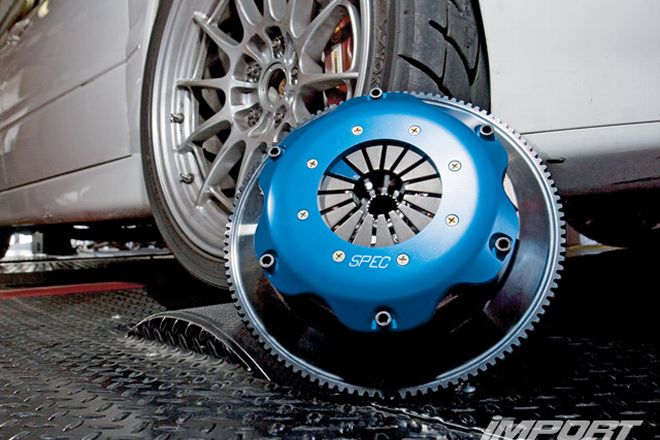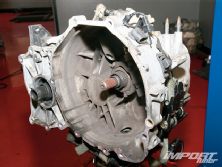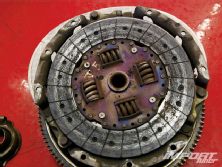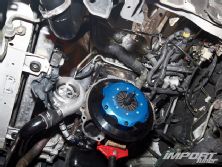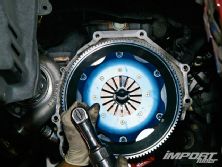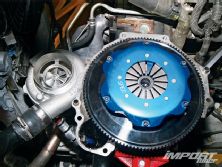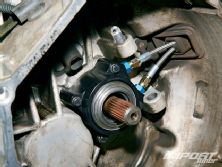You put the car into gear, bring the gas up slightly and slowly creep into deep stage. The clutch goes in, the revs build, and the only noises invading your ears are the sweet sounds of turbo spool and sonic exhaust blasts. The guy in the rocket-powered minivan in the next lane (hey, it could happen) is sporting a pair of dead-serious eyes and looks ready to run. You'd be concerned about the turbo kit you just finished piecing together, except there's no time to think. The lights drop, you pop clutch and floor it. Nothing happens. No launch, no minivan destruction and no speed. The engine just bounces off the rev limiter and you've got smoke. Not tire smoke-clutch smoke.
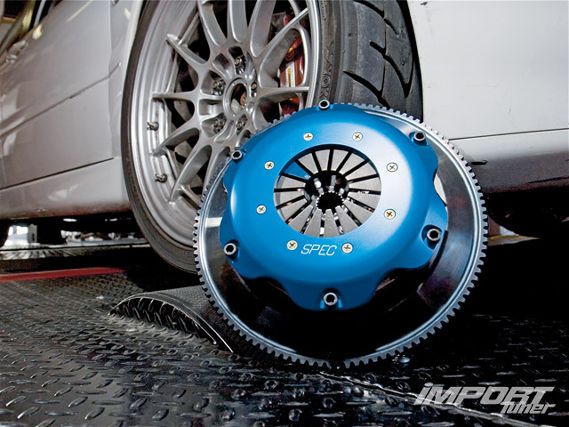 |
2005 Mitsubishi Lancer Evolution - Tech Knowledge
|
2005 Mitsubishi Lancer Evolution - Tech Knowledge
Like a good set of tires, the drivetrain is an often-overlooked area of vehicle tuning. When it comes time to getting that project buttoned up, the cheapest clutch kit is usually shoved in. Or, more often than not, the stock clutch is pushed to the ragged edge and subjected to 400 lb-ft more torque than it was ever designed for. Being cheap and getting too light of a clutch is a surefire way to shorten the life of your clutch kit and reduce the efficiency of your car. Who wants that? To complement a high-powered engine, you'll want a clutch and flywheel combo that has more than enough holding power, good pedal feel (if driven on the street), smooth engagement and, in most cases, lighter weight. With all these elements in place, a car can accelerate and decelerate faster using the same amount of power. The key is the fact that the clutch and flywheel are solidly bolted to the driveline-when engaged, the combo spins at the same rpm as your engine. By pressing in the clutch pedal and moving the gear lever, you're actually engaging and disengaging the transmission's input into the engine.
It's simple enough to guess that a lighter clutch and flywheel are easier to spin, since they weighs less. This is the reason for the massive popularity of lightweight flywheels; they can actually make your car faster with their reduction in weight. And since the force required to spin a clutch and flywheel depends partly on mass and size, a smaller clutch/flywheel combo should also aid acceleration. It's the same principle behind using lightweight forged wheels versus big, heavy chrome wheels.
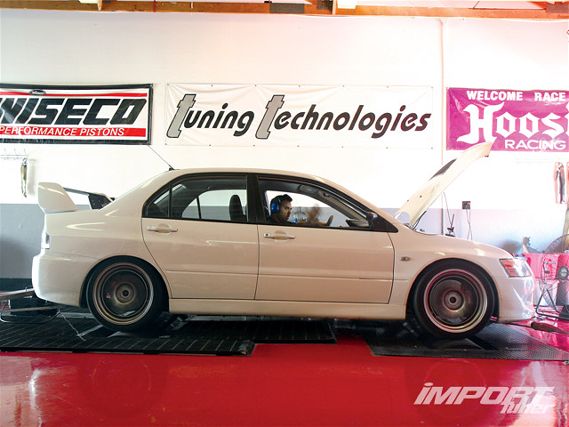 |
The EVO was put on the dyno at Tuning Technologies with the stock clutch and then run on the dyno with the SPEC clutch after a day for break-in. We measured the same ambient air conditions for both runs.
|
The EVO was put on the dyno at Tuning Technologies with the stock clutch and then run on the dyno with the SPEC clutch after a day for break-in. We measured the same ambient air conditions for both runs.
Taking rotating mass out of vehicle drivetrains-via lightweight wheels, pulleys, driveshafts-to free up power has been done for years, but to quantify how effectively a lightweight clutch and flywheel can benefit your ride, we hit the AWD dyno of Tuning Technologies in Colton, CA, where Alfred, Jen and the TT crew power tested our M1 Fabrication & Development '05 Mitsubishi Lancer Evolution VIII Street Class Super Lap Battle car with its stock clutch and flywheel, then once again after installing a SPEC Clutch Mini Twin kit. A custom GT30R turbo kit had been fitted to the M1 EVO VIII, and 420 whp is available at a low-boost setting of 22 psi.
The SPEC Mini Twin clutch kit offered both the elements we were looking to test gains from: a smaller size and a lighter weight. Rated to hold 800 lb-ft of torque, the SPEC clutch kit came with an aluminum flywheel seven pounds lighter than stock (8.5 pounds versus 15.5 pounds) and was 16 pounds lighter in total than all the factory parts. This is even counting the SPEC hydraulic throwout bearing that converts the clutch from pull-type to push-type for more reliable operation.
 |
The factory clutch slave cylinder will no longer be needed, replaced by these braided lines. The clutch line from the master cylinder goes directly into the lower line and the upper line contains the new bleeder screw.
|
The factory clutch slave cylinder will no longer be needed, replaced by these braided lines. The clutch line from the master cylinder goes directly into the lower line and the upper line contains the new bleeder screw.
There are a few ways to increase holding power and torque capacity with aftermarket clutches, but each has its downsides-friction material that offers better heat resistance, but minimal holding power; stronger pressure plates that hold more torque, but stiffen pedal feel; multi-disc setups that offer the best of both worlds, but are expensive and noisy. The SPEC Mini Twin clutch uses two clutch discs with what is basically another flywheel sandwiched between them, to give more surface area than just one disc, and more holding power with minimal pedal stiffness.
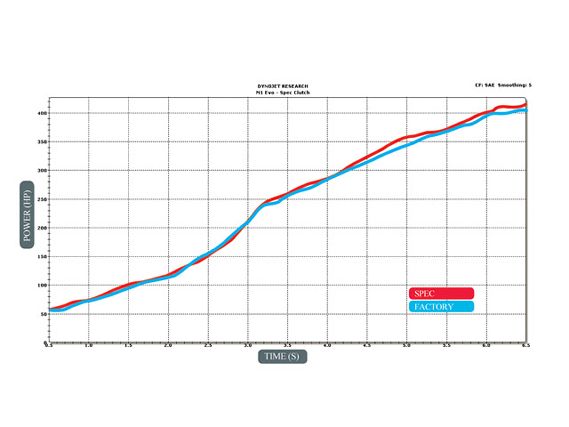 |
2005 Mitsubishi Lancer Evolution - Tech Knowledge
|
2005 Mitsubishi Lancer Evolution - Tech Knowledge
With less mass on the flywheel to help launch the car, this kit is ideal for road racing and track use-a heavier flywheel (which SPEC offers on demand) might be a better choice for drag racing. The clutch needs to be slipped with plenty of revs to get going. It can be used in a street car but it's not exactly street-friendly; this is a real racing unit. SPEC does offer more street-specific units, but weighing the lightest of the pack, this racing-style clutch was the best option for us to test differences in rotational mass.
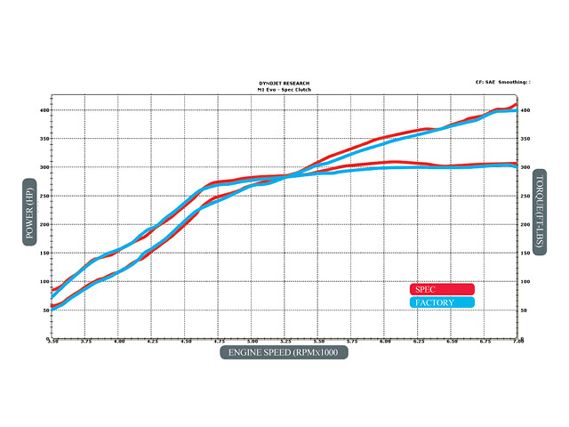 |
2005 Mitsubishi Lancer Evolution - Tech Knowledge
|
2005 Mitsubishi Lancer Evolution - Tech Knowledge
First up, we tested the GT30R's fury against the stock clutch setup. This combo has overheated and slipped on-track at Buttonwillow Raceway, proving the low capacity of the stock parts. The SPEC clutch was then installed by the Tuning Technologies staff and given a solid day of break-in driving before the M1 EVO was put back on the same dyno. Both dyno runs used the same exact Tuning Technologies ECU tune and boost level, and were conducted under the same atmospheric conditions, aside from a two-degree-Fahrenheit increase in ambient air temperature for the SPEC testing.
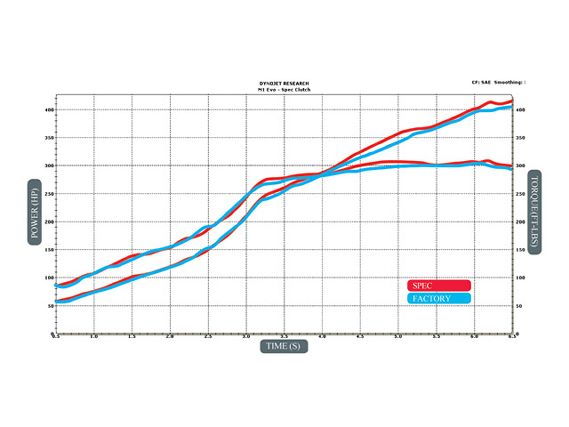 |
2005 Mitsubishi Lancer Evolution - Tech Knowledge
|
2005 Mitsubishi Lancer Evolution - Tech Knowledge
The results are eye opening, with the lighter and smaller SPEC twin-disc clutch kit allowing the EVO's engine to rev faster and easier, hitting peak boost and making power sooner. Where the stock parts allow the EVO to reach 300 lb-ft of torque in about 5.2 seconds, the SPEC clutch hits that same amount in only 4.5 seconds. We measured almost a half-second difference from stock for the EVO to reach the 350whp mark, and once peak boost was reached, the SPEC clutch helped free up power all the way to the top.
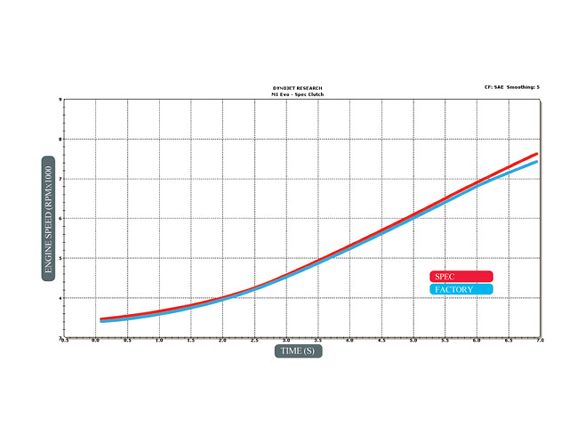 |
2005 Mitsubishi Lancer Evolution - Tech Knowledge
|
2005 Mitsubishi Lancer Evolution - Tech Knowledge
It took almost an entire second less for this EVO to reach the 300 lb-ft torque mark during each SPEC-enhanced dyno run. In a single lap around a track, imagine how many times the car must enter braking zones, hit apexes and then accelerate out of corners. Multiply all that acceleration by the time gained here and you'll see the advantages of reducing rotational weight. Races are won or lost by fractions of a second, and we have that here already in a single dyno run, with a clutch that won't slip. Sometimes going faster isn't just about adding power. Sometimes it's about maximizing the power you already have.
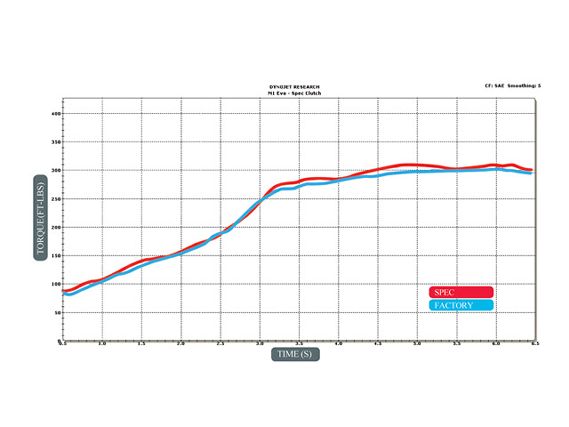 |
2005 Mitsubishi Lancer Evolution - Tech Knowledge
|
2005 Mitsubishi Lancer Evolution - Tech Knowledge

